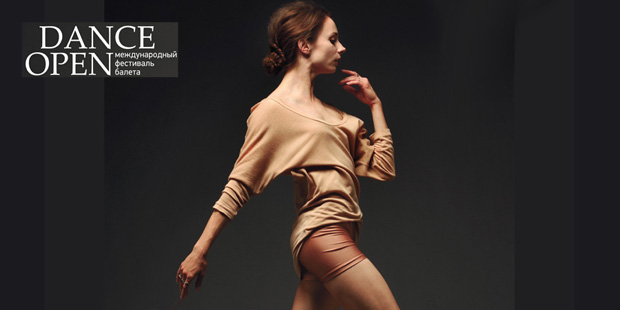
© Dance Open. (Click image for larger version)
The XIV International Ballet Festival Dance Open
St Petersburg, Alexandrinsky Theatre
21-27 April 2015
www.danceopen.com
Vaganova Academy of Russian Ballet
vaganovaacademy.com
There was very nearly going to be no Dance Open festival this year. The economic situation in Russia and the fall of the rouble late last year when planning was being done, produced huge challenges for the organisers of one of the world’s biggest ballet forums, now in its 14th year. However stiff cuts, fewer foreign participants and no prize giving, enabled the organisers to continue. For me, it meant being invited for four days rather than the usual 7, and so I missed Dutch National Ballet’s Back to Bach and arrived just in time to run to the beautiful Alexandrinsky Theatre to see the Bolshoi Ballet’s wonderful new-last-summer ballet, The Taming of the Shrew, by Jean-Christophe Maillot.

© Yurshin Evgeny. (Click image for larger version)
This production has just received three of Russia’s coveted Golden Mask Awards for best production and best dancers, Ekaterina Krysanova and Vladislav Lantratov, and it is obvious why. The ballet is slick and stylish; it has innovative sets and costumes and splendid lighting, the music, a compilation of 25 of Shostakovich’s works, is pleasing, and the dancing shows off the company – and the leading dancers – in a new light. The production is in sharp contrast to that of John Cranko, which faithfully follows Shakespeare’s play in costume and scenario. Here, Maillot succeeds in his potted version, with all the energy and bustle of a circus ring, making the scenes vivid and full of surprises.
The first is the appearance, before the curtain goes up, of a slinky, high-heeled Anna Tikhomirova oozing elegance in tight black pants and a feathery off-the-shoulder top as she strolls onto the very front of the stage and checks out the audience. Then she sits and sensuously puts on her pink point shoes, raising her lovely legs so all can admire. After a saucy glance back at the audience, she ‘lifts’ the curtain, where, in the stark whiteness of Padua, mayhem is about to reign. Tikomirova struts into the scene as The Housekeeper, but is more like a ringmaster who controls the frenetic comings and goings.

© Yurshin Evgeny. (Click image for larger version)
Enter Katharine who pulls sister Bianca’s hair, and chases off all the male suitors, spitting venom and striking fear into everyone with her wild leaps and aggressive fighting. Redheaded, sinewy Krysanova is just brilliant in this role. Her early days at the Bolshoi were somewhat overshadowed by Natalia Osipova, but today, and especially in this ballet, she proves herself an outstanding dancer, able to cope with the difficult technicalities of Maillot’s, often breakneck speed, choreography with an ease that makes it all look so natural and simple. She persuades with her characterisation and shows she is also a great comic. Another revelation was the tiny Anastasia Stashkevich, who is usually cast in sweet, quiet ladylike roles. As Bianca, she proved herself feisty and funny, with strong technique that belied her fragile looks. Semyon Chudin, as her lover, Lucentio, has a beautiful classical line and easy manner, and his gentle duet with Bianca to The Gadfly demonstrated flowing lyricism. And of course, there was Petruchio, created by Vladislav Lantratov. Breaking out of his normally more solemn princely shell, he bounded on stage large as life, his hair unruly, his coat shaggy and his manners uncouth. His acting was convincing and his dancing properly wild as he hurtled across the stage or partnered Katharina in some dangerous moves. His smirks and manners made him a real rogue, and when he finally tamed the Shrew, there was some active rumpy pumpy going on under the bed sheet!

© Yurshin Evgeny. (Click image for larger version)
Maillot’s choreography hurtles through Shakespeare’s play, giving the boys plenty of high Bolshoi leapings and turns, and bringing the girls on like high-stepping prancing ponies. The pace barely slackens – but there is one more surprise in store: at the end, when both girls are wed, Shostakovich’s ‘Tea for Two’ tune from his Jazz Suite is played. And just when you expected to see a turkey trot from everyone, they sit down and individually show off different ways to drink tea! (The ballet will be screened in cinemas next January – and hopefully be brought when the Bolshoi returns to London in the summer.)

© Yurshin Evgeny. (Click image for larger version)
After all that riotous vigour from the Bolshoi Ballet, it was time for the Vienna State Ballet to strut its stuff. The company, now under the direction of ex-Paris Opera superstar, Manuel Legris, is no longer the bastion of academic classicism of its historic past. Legris has reached out to the contemporary world and is bringing in a new dimension for his dancers, who look good with sharp-edged technique and energy galore. They brought three works offering different views of the contemporary scene. The first two pieces were filled with athleticism – there was barely a moment of stillness in them, and it was challenging to work out what objectives the choreographers had in mind. The third, a sort of morality play about what could happen to life after death, was visibly entertaining and expressive.
The Saturday evening show began aptly with Eventide by American Helen Pickett, ex-Forsythe dancer, which demonstrated her good use of space and ability to produce high-action drive from her dancers. The curtain lifted on an orange-red glowing stage where eight silhouetted figures moved in their own space – the girls, elegant in figure-hugging silvery spandex swimsuits with red tulle bottoms, the boys in tight trousers. The choreography was often predictable with plenty of joyous leaps from the boys, speedy but flowing lyricism from the girls, and repeated jerky movements and frenetic shaking of the hands and fingers by all of them. The dancers flew on and off stage at rapid pace, and it was difficult to decipher what it was all about. Darkness fell leaving an open ‘doorway’ of light, until finally, there was a flood of brightness as the dawn broke. The music was a mix of composers including Philip Glass and Ravi Shankar, whose relentless rhythms with an Indian aura triggered the dancers’ perpetual movement.

© Dance Open. (Click image for larger version)
The dancers continued their frantic actions in Patrick de Bana’s Windspiele, an 18 minute ballet performed to the first movement of Tchaikovsky’s Violin concerto in D major – such a wonderful score that certainly fired up the action and set the pace. It made compulsive viewing, and one had to admire the stamina and power of the dancers imitating the force of the wind and the energy it produces and sends out. Again, there were plenty of jerky actions and clenched hands zigzagging over the head. And there were the strange costumes, designed by Paris Opera’s Agnes Letestu. Three of the men – including lead dancer Kirill Kourlaev – wore huge baggy Gopak trousers, which flapped in the breeze of action, but hid legs and feet. The girls were in Balanchine-style ball gowns – again an odd choice for such an energetic piece, though they did float superbly.
Finally a bizarre piece about a man who puts his head in a noose and has flashbacks of his life with the extraordinary characters he meets. Contra Clockwise Witness by (ex NDT) Natalia Horecna is filled with strangely-named and strangely-clad people – the Soul is naked, three Angels of Death have skull faces, there’s a trouserless Gin man with his bride who wears a veil and white socks, and two (unborn?) persons in long winding sheets that pull from the wings, contorting their faces. There’s a conga dance, a music hall number for the angels and a smartly-paced dance for the married couple. There was so much going on that the choreography often took second place to watching the weird characters. Very entertaining but, being so busy, it needed more punch – a sharper sense of humour – to make it memorable.
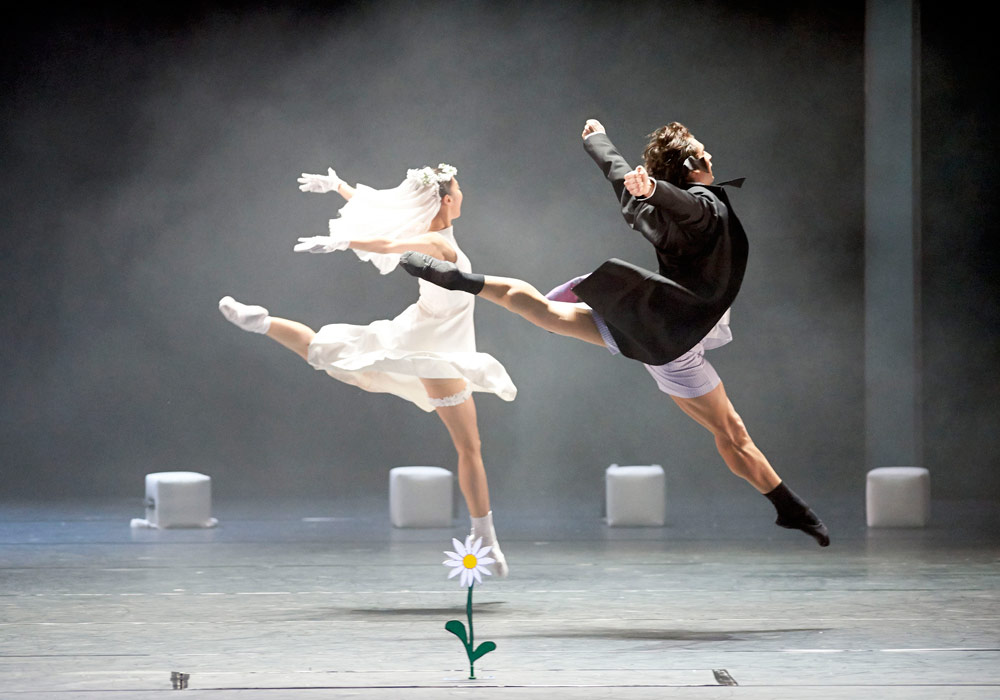
© Michael Poehn / Wiener Staatsoper. (Click image for larger version)
Sunday was a day off, which meant Hermitage Museum visiting – along with, it seemed, the rest of Russia. What treasures and riches are there on offer to gawk at, and to realise why there was a revolution.
Monday saw a visit to the Vaganova Academy at the invitation of the new director, Nikolai Tsiskaridze. We met on the 5th Floor of the historic building on Rossi Street, in the small sitting room off his office, whose walls were graced with photos of Galina Ulanova, Audrey Hepburn, Catherine the Great and an icon. There, together with Zhanna Aupova, (ex Kirov ballerina, now coach at Mikhailovsky Ballet), we had tea and biscuits and chatted about the past and the present. Tsiskaridze, his bushy dark hair pulled off his face with a hairband, said that, after last year’s disruption when it was announced he was taking over the Academy from Altynai Asylmuratova, work was ‘normalny’ again. Some things had been changed, but he felt that the staff all supported him. “Whatever happens, there can be no changes to the teaching system,’ he said emphatically. ‘We have our ‘bible’, this textbook by Vaganova. This is the only ‘teacher’ of Russian ballet – the whole syllabus is written here – and is used in every school throughout the country. We have over 600 students in the Academy with 42 from foreign countries.’ Tsiskaridze finds the smaller city of St Petersburg ‘more relaxing, with fewer intrigues’, though he still has his home in Moscow and goes down by train every weekend to stay there.
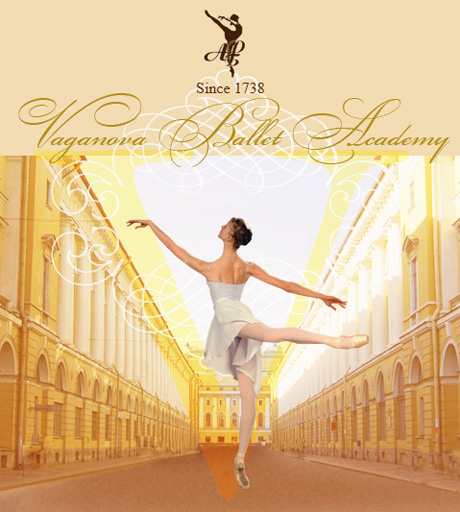
© Vaganova Academy.
Tsiskaridze was exceedingly generous with his time and took me all over the building – which I hadn’t visited for over thirty years. It is beautifully restored, expanded and brightly painted, and on the walls along its long corridors now hang lines of photographs of the Academy’s history and the ex-pupils who have made their mark on the ballet world. The academic classrooms were any teacher’s dream: a handful of students in each one, all showing interest in their subjects. The museum has expanded over the years, and now harbours priceless artefacts from Russian Ballet’s history. Every time we met a child, we would get a curtsey or a bow – though later, when I walked down the same corridors alone, the students were all heads down with their i-phones and i-pads. I attended two classes – one with 16 year-old girls in mink coloured leotards and skirts rehearing The Awakening of Flora for a concert – such demanding precise choreography – and another class performing the basic daily routine. Each class had only 10 pupils which meant expert attention from the teacher. But I missed the sprinkling of the watering can routine on the old wooden floors – now they are all Marly.
The final evening saw the Gala Concert that was very nearly cancelled, due to the financial situation. And of course, there were no prizes and big reception as in years past, no jury of international company directors, so the gala this time was more low-keyed, certainly the first half, though it perked up in the second. But without that edge of competition, something was missing.
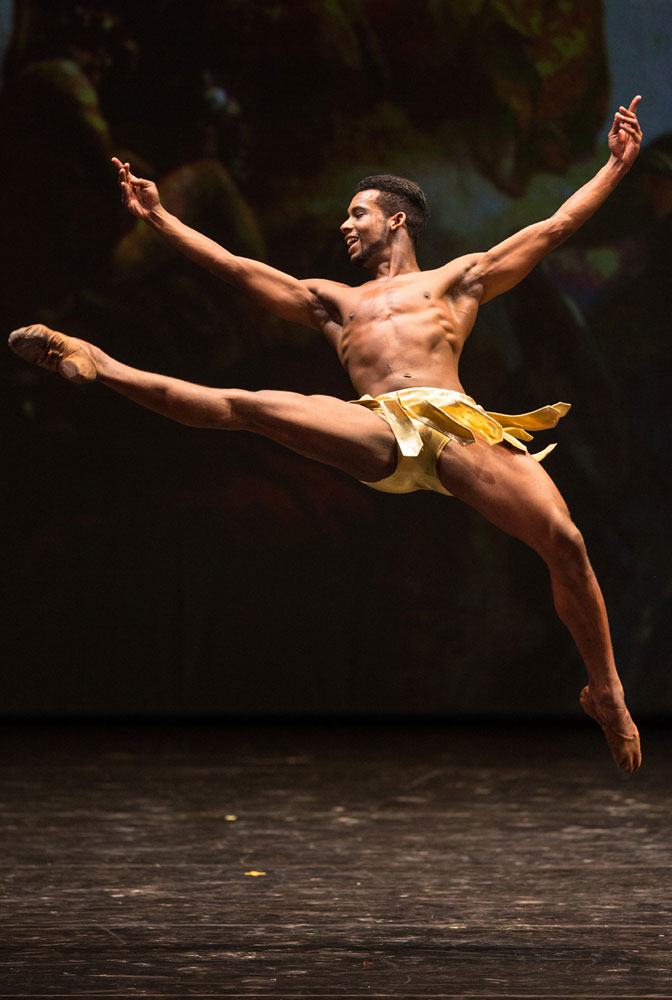
© Stas Levshin. (Click image for larger version)
There were the expected classical gala pas de deux: Flower Festival in Genzano, danced with bouncy detailing by Royal Danish Ballet’s J’aime Crandall and Alban Lendorf: two from Esmeralda including the soulful, tambourine duet, performed with panache by Yolanda Correa and Yoel Carreno, full of sharply defined technique and lovely classical lines. Later, Correa was partnered in Diana and Acteon by the amazing Osiel Gouneo. His sleek pantherine actions and winning charisma and her rock-solid balances sent the audience into constant applause. All three Cuban dancers are now with Norwegian National Ballet. (Osiel told me at the party afterwards that he expects to be coming to English National Ballet for the Christmas season – he is a force to watch).
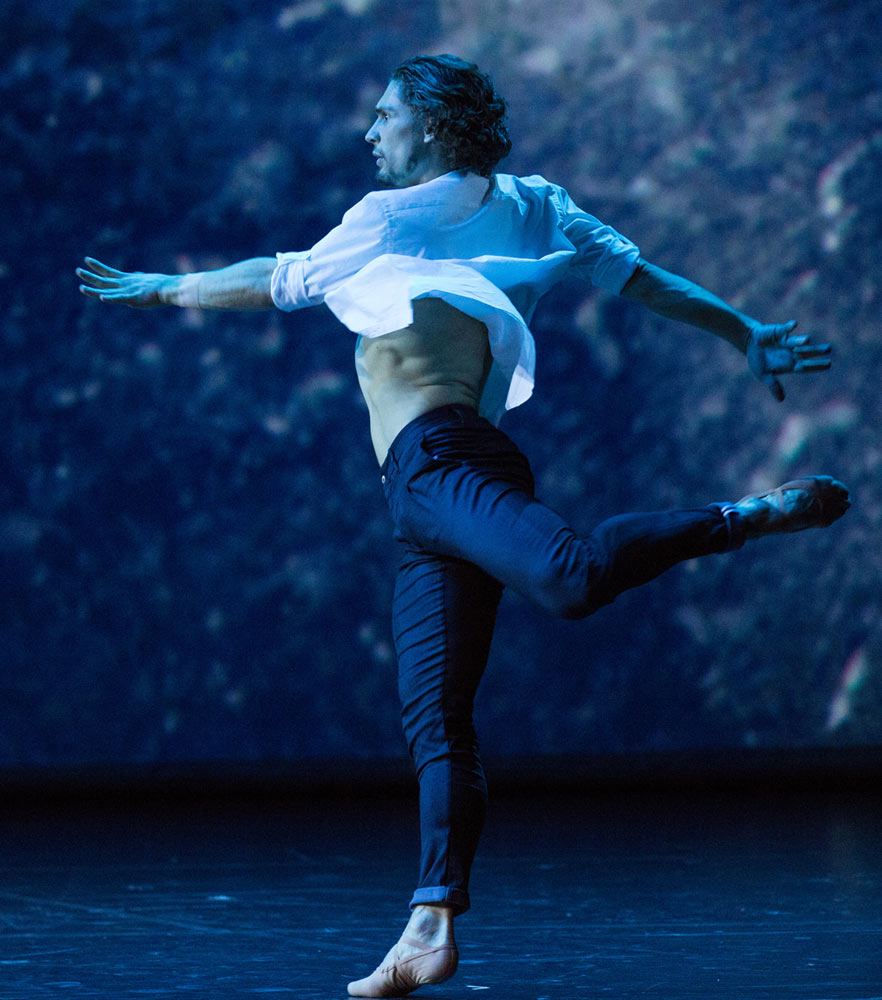
© Stas Levshin. (Click image for larger version
There was the perennial favourite, Flames of Paris, performed by a vivacious Yelizaveta Cheprasova and the wunderkind himself, Ivan Vasiliev. He had already been seen performing his own choreography, Underwood, with Denis Savin from the Bolshoi. To the electronic music of Max Richter – composer of The Royal Ballet’s Woolf Works – the two boys, in open white shirts and jeans, jittered and jerked from start to finish, giving neither the opportunity to show off his full potential. At one point their hands operated like factory workers inserting parts into an unseen object. Having danced classical heroes for most of his life, Vasiliev obviously wants to branch out from that image, but needs guidance as to what choreography is memorable or just ‘flash-in-the-pan’. His unique talent needs more than physical jerks to take him higher.

© Stas Levshin. (Click image for larger version)
Wayne McGregor ‘s work is certainly far from that heroic vision, as was seen when Royal Ballet’s Melissa Hamilton and Eric Underwood (same name as Ivan’s piece!!) performed Qualia. It’s not exactly a scintillating gala piece as it is performed in near darkness and shows the gifted, elastic-body Melissa in less than endearing poses – legs splayed to the audience, gymnastic upside down views etc, while Eric’s dancing talents were seen only as a strong and expert partner. Unfortunately, their second piece, the pas de deux from Wheeldon’s Tryst , was not enough of a contrast to really appreciate these two dancers’ exceptional techniques though they offered musicality and presented sculptured and precise images.
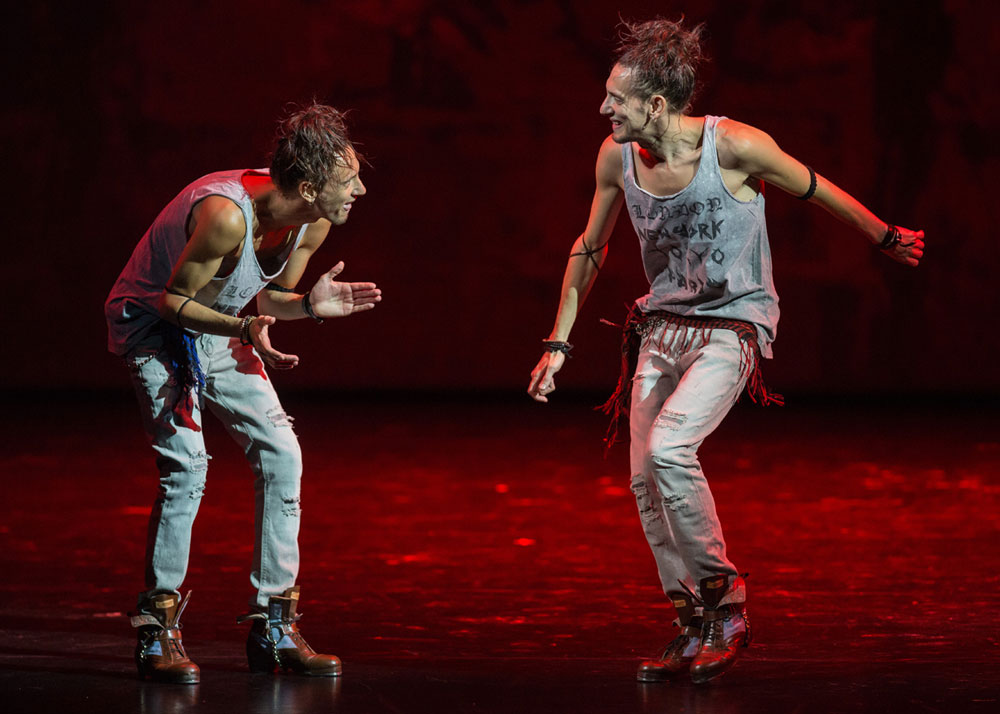
© Stas Levshin. (Click image for larger version)
There was funk, performed with startling quicksilver gymnastic tricks by Rasta Thomas and Albert Blaise. And there was a comic but brilliant tap dance performed by the Lombard (identical) Twins, who got the audience rhythmically clapping and stomping their feet to accompany their remarkable footwork in Escualo.
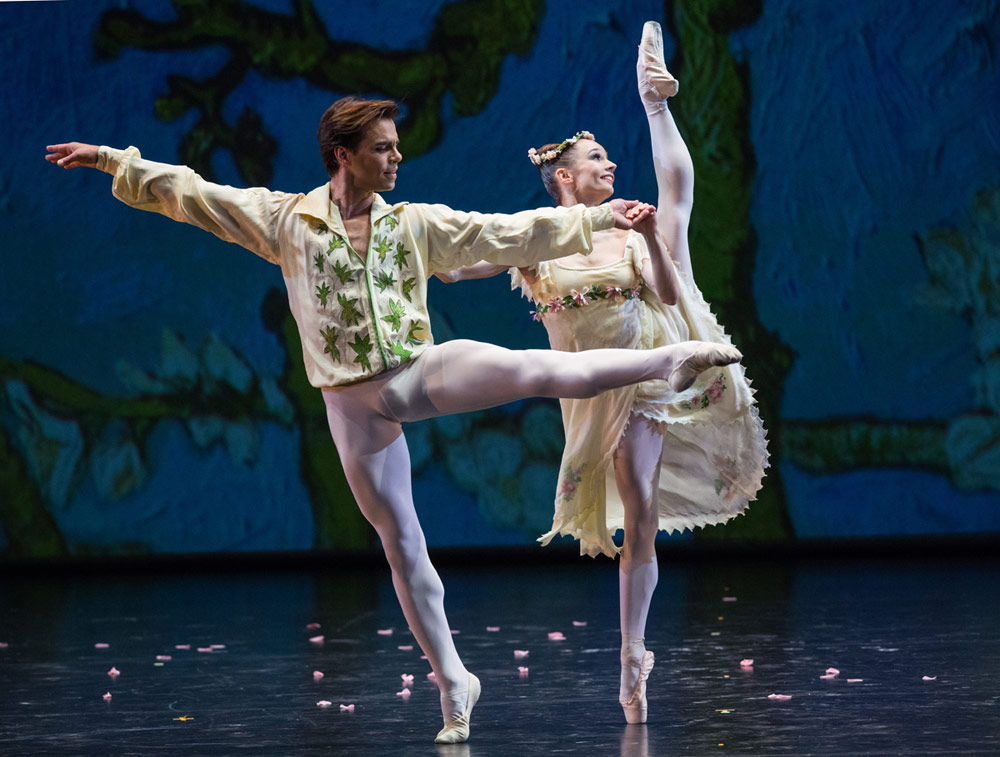
© Stas Levshin. (Click image for larger version)
On the dramatic side we had the Farewell duet from MacMillan’s Winter Dreams, danced with lovely fluidity and grace by Sarah Lamb with Vadim Muntagirov as her departing soldier lover. He showed off his brand of classical purity and high jumps but was unable to convince of his heartfelt passion – it will come. For a bit of ‘’froth’, we had Ashton’s Voices of Spring, performed by San Francisco Ballet’s petite and ethereal Maria Kochetkova and Joan Boada, who had flown in late the night before. It’s a light and attractive work but my Russian neighbour couldn’t help comparing it to the exhilarating similar party piece, Spring Waters, by Asaf Messerer, which bubbles over with Russian bravura. The couple also danced a fragment from Yuri Possokhov’s Diving into the Lilacs, a flowing, attractive piece. But without a synopsis of the full work, it was hard to know what it was about. Remi Wortmeyer and Silvia Azzoni danced a pas de deux from John Neumeier’s Sylvia – a mix between acting and dancing but smoothly and elegantly performed. And there were the guests from American Ballet Theatre, Isabella Boylston and Daniil Simkin, dancing Balanchine’s Stars and Stripes. I swear he looks younger (and shorter) every year – he was so boyish and full of fun, saluting cockily and marching with glee while his partner was perky and polished as the Liberty Bell.

© Stas Levshin. (Click image for larger version)
The evening ended with all the dancers flying across the stage to the William Tell (Lone Ranger) overture until the poppers were popped and rained down silvery ribbons on them. Compared to past years, this gala was quite subdued, offering fewer ‘firework’ moments. Let’s hope the economy bucks up before next year!












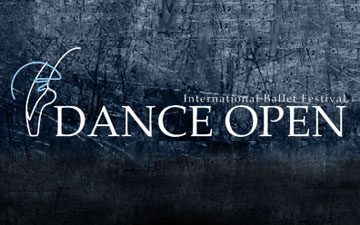
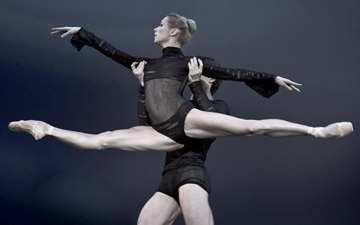


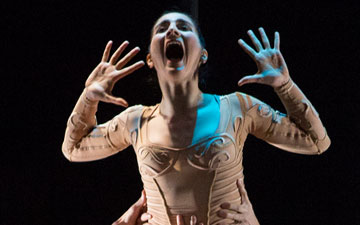
You must be logged in to post a comment.